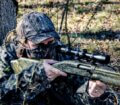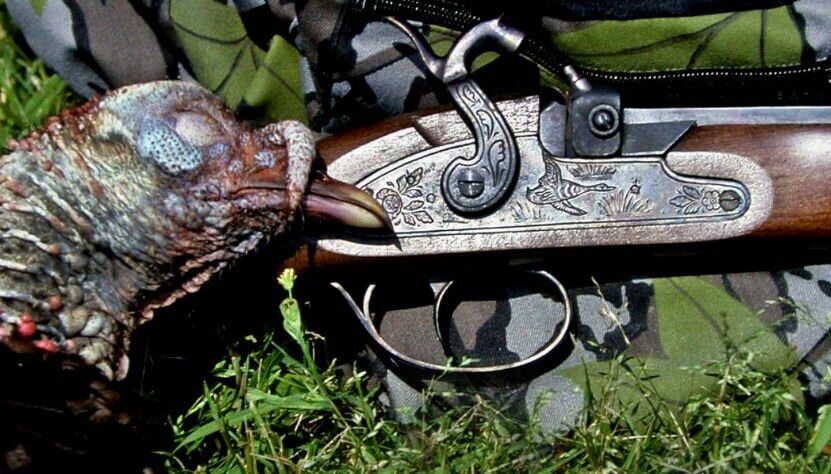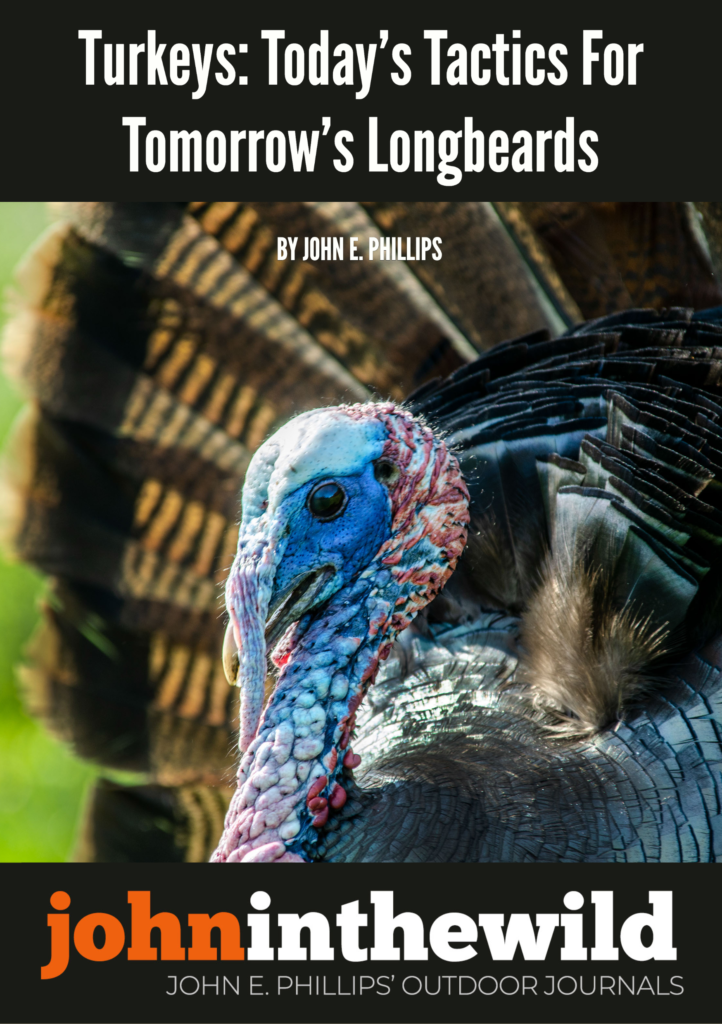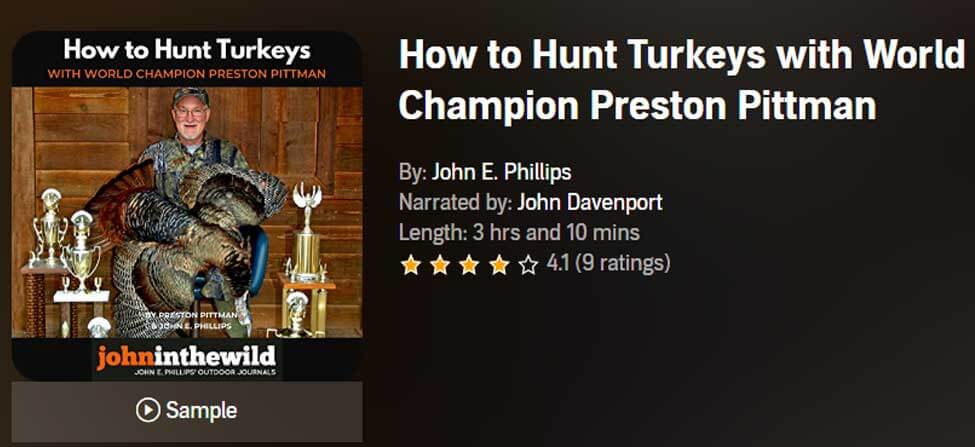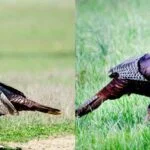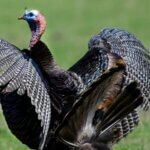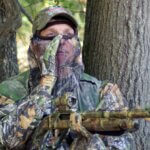John E. Phillips’ Note: When I go after a turkey, the war begins. If I don’t have to swim a creek, crawl through fresh cow manure, run through briars, climb trees, jump barbed-wire fences or slide down mountains, then I have had an easy day afield chasing turkeys. Like other aggressive turkey hunters who are scrappy and adventurous, I decide before ever leaving my home that whatever I have to do that’s legal and moral, I’ll do that day to take a tom turkey.
Aggressive hunting is not just chasing turkeys, outflanking turkeys, calling loud and long to turkeys or continuing to hunt after all hope seems gone. Going to war with turkeys is a state of mind that dictates that no matter what happens during the day, you will endure and battle fiercely, until you take your tom, or you have to be physically drug back to camp because you’re exhausted. Through the years, I’ve been fortunate enough to hunt with some of the most-enterprising war lords of the turkey-hunting fraternity who have taught me the value of being aggressive when hunting turkeys.
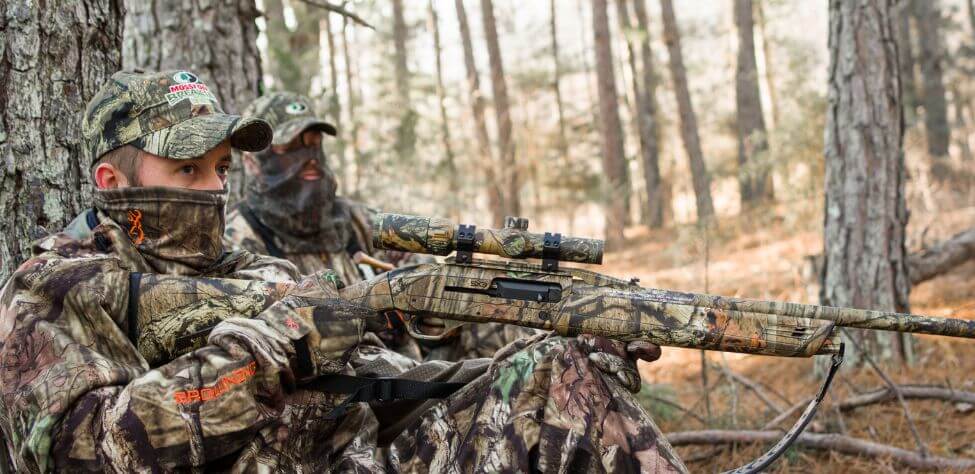
Larry Norton and the Rio Grande Turkeys:
Larry Norton, a two-time World Champion turkey caller from Butler, Alabama, is a woods-tactician who attacks turkeys by talking to them more than any hunter I know. While hunting Rio Grande turkeys with black powder in Texas some years ago, Norton and I spotted a flock of turkeys in a field just before dark. “Those turkeys will have to go to the cottonwoods about 3/4-mile away to roost,” Norton explained. “If we can reach the trees before the turkeys do without being seen, you can take your bird before dark.”
Norton is a first-class athlete, who should have been on an Olympic, long-distance running team, instead of being a professional turkey hunter. His speed afoot is only surpassed by his turkey-hunting knowledge and skill.
When we arrived at the cottonwoods, I was breathing hard like a man who had paused for a moment after being chased by a tiger. Norton told me to, “Take a stand below me, and I’ll sit on this little ridge. I’ll call the tom. When he comes in, he’ll probably walk down this old cattle road where you can bag him.”
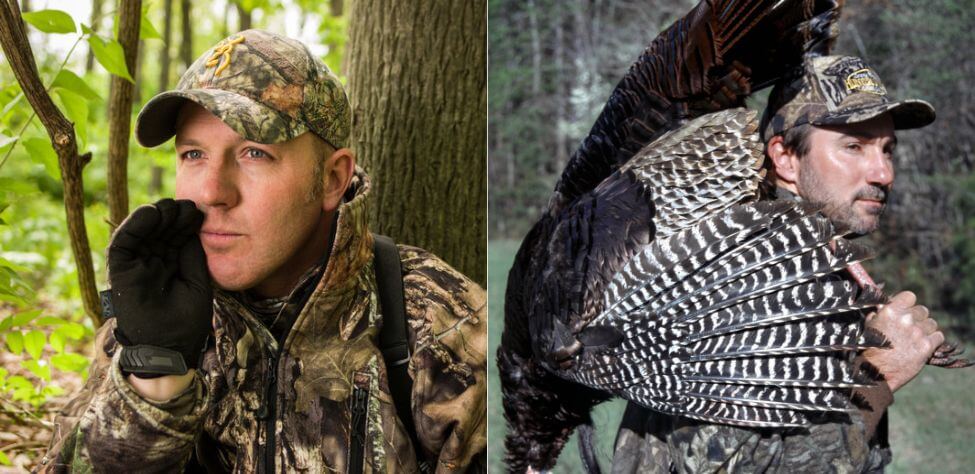
Norton cut and cackled, pausing every few minutes to watch the tom. Then after 15 minutes of intermittent calling, the veteran woodsman cut and cackled with every breath. “He’s coming, John; get ready,” Norton whispered. Behind me I heard Norton panting heavily in-between his calls. Although an experienced turkey hunter, Norton sounded from his breathing like a novice who was so excited he was about to hyperventilate. Finally, I saw the head of a long-bearded Rio Grande gobbler when the turkey was 20 yards from me. But because we had taken a stand in a plum thicket, I couldn’t get a clean shot, until the gobbler passed some 10 yards from me. I was afraid that Norton’s heavy breathing would spook the gobbler before I could shoot. However, at last, the ole tom stepped into my shooting lane, my blackpowder shotgun reported, and the tom tumbled.
After Norton and I congratulated each other, picked-up the bird and started walking back to camp, I told Norton I couldn’t believe how excited he was about the turkey coming to us. Norton laughed deeply as he explained that, “I was panting so hard, John, because I was about to run out of air. I had to blow the call so loudly, so long and so often that I couldn’t get my breath. Each time I quit calling aggressively and forcefully, the turkey stopped, went into full strut, began spinning and quit coming to us. As long as I called, the turkey continued to walk toward us. If I hadn’t kept calling until I almost ran out of air, the turkey wouldn’t have come to us until after dark.”
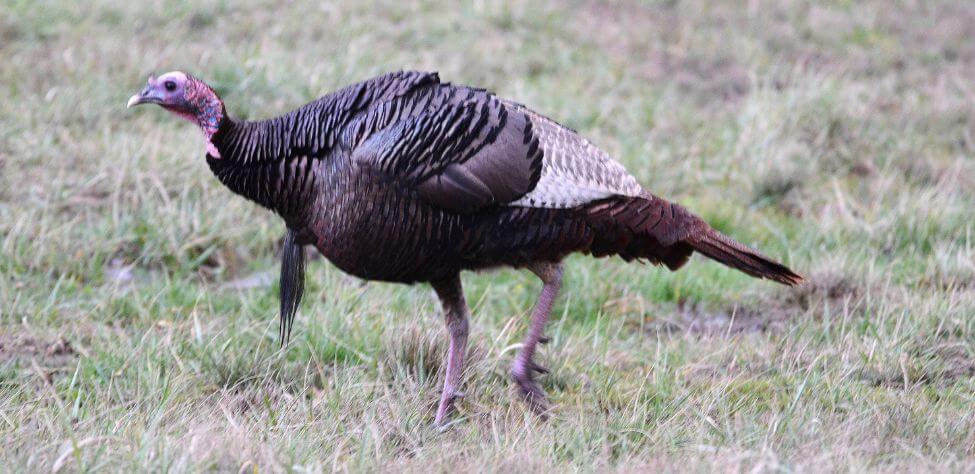
Larry Norton and Eastern Toms:
On another trip with Norton while hunting eastern gobblers in my home state of Alabama, I watched as Norton called continuously from the time we took a stand, until the bird was in my gun sights. When I squeezed the trigger, Norton still was calling the tom.
“From watching turkeys every season, I’ve noticed that when a turkey is coming to a caller, as long as the bird can continue to hear hen calls, he’ll keep walking to the hunter,” Norton reported. “Often when he fails to hear the hen calling, he will stop and cock his head, as though he’s listening for the hen. I believe many times a gobbler will hang-up when the hunter quits calling because the bird believes that the hen is looking for him or has walked away from him. Once the hen becomes quiet, the proud tom thinks all he has to do is strut and drum because she must be coming to find him. The more you call, the more turkeys you’ll take each season.”
Tomorrow: Preston Pittman Wars with Turkeys
John’s latest print book was published last week: “Turkeys: Today’s Tactics for Tomorrow’s Longbeards,” and the Audible version should be available April 1. In his book that includes John’s time-tested ways to take turkeys from his 50+ years of hunting them, he mentions that the two ways to learn how to turkey hunt both work. You can learn all about turkey hunting by yourself through trial and error, which is the slowest way to learn to turkey hunt and means you’ll make the most mistakes. Or, you can hunt with the best turkey hunters anyone knows and learn from them what they do, why they do it, when they do what, and what not to do.
Expert Guidebooks on Turkey Hunting: Best Sellers
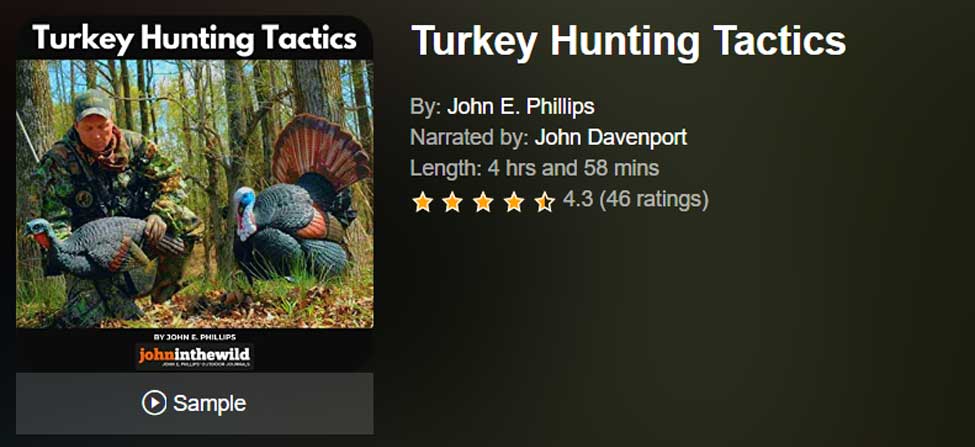
Turkey Hunting Tactics
This turkey hunting audiobook has entertaining chapters like: “How to Miss a Turkey”, “Hunting with a Guide”, and “The Turkey and the New York Lady”.
You’ll learn about all the subspecies of turkey across North America, how to use a turkey call, how to scout before turkey season, how to find a turkey to hunt, and what hunting gear you’ll need to put the odds in your favor to take a wily gobbler.
VERSIONS: AUDIBLE, KINDLE & PRINT
How to Hunt Turkeys with World Champion Preston Pittman
You easily can take a turkey if you don’t make any mistakes, but you have to know what the deadly sins of turkey hunting are to keep you from making those mistakes. If you understand how to hunt a turkey, you’re far more likely to take a gobbler than if you just know how to call a turkey.
Of course, calling is important, and if you want to learn to call a turkey, Preston Pittman will teach you how to call turkeys with box calls, friction calls, diaphragm calls, and other turkey sounds.
You’ll also learn why Preston Pittman once put turkey manure all over his body to kill a tough tom.
When you have turkeys that strut and drum in the middle of a field, when you know there’s no way to get close enough to get a shot, Pittman will show you some weird tactics that have worked for him to help you hunt tough ole toms.
But the main thing you’ll learn in this book is how to become the turkey.
Using what he’s learned while hunting wild turkeys, he’s also become a master woodsman who can take most game, regardless of where he hunts. To learn more secrets about how to be a turkey hunter from one of the world champions of the sport, this turkey-hunting book with Preston Pittman is a must.
VERSIONS: AUDIBLE, KINDLE & PRINT
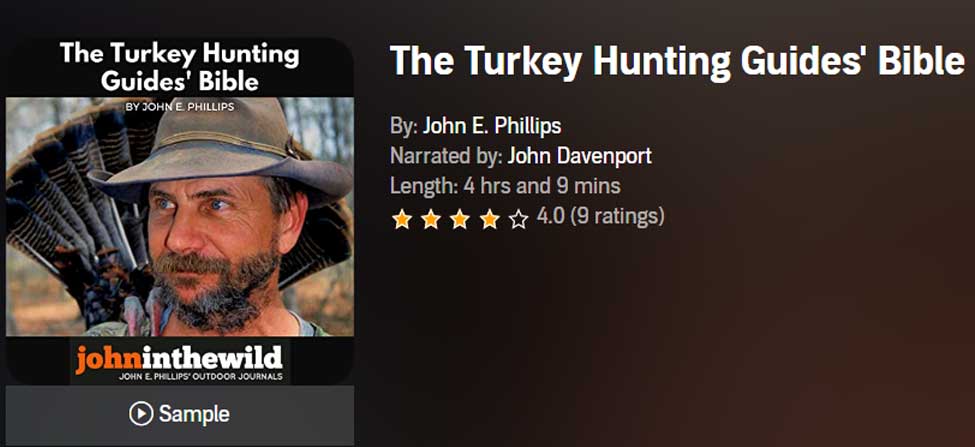
The Turkey Hunting Guides’ Bible
The quickest way to learn how to turkey hunt successfully is to either hunt with a turkey hunter with years of experience or a turkey-hunting guide. These two types of turkey hunters have solved most of the problems turkey hunters ever will face.
Just as one size of shoes won’t fit every person, one style of turkey hunting doesn’t fit each hunter. Each turkey-hunting guide interviewed for this book has his own style of calling, hunting, and outsmarting turkeys.
While listening to this book, make a list of the new information you’ve learned, take that list with you during turkey season, and try some of the new tactics. Then you’ll become a more versatile turkey hunter and prove the wisdom from The Turkey Hunting Guides’ Bible.
VERSIONS: AUDIBLE, KINDLE & PRINT
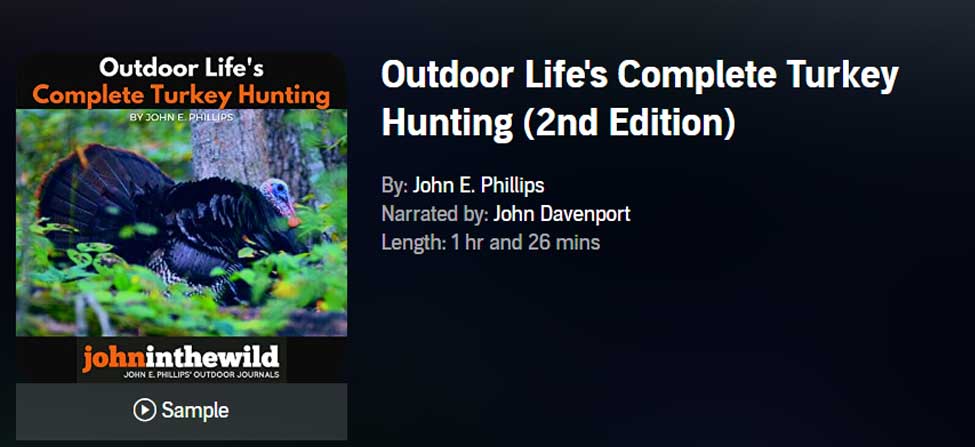
Outdoor Life’s Complete Turkey Hunting (2nd Edition)
This Audible book will help you learn how to call turkeys with two of the nation’s best, longtime and well-known turkey callers, Rob Keck, formerly with the National Wild Turkey Federation, and Lovett Williams, a wildlife biologist who recorded wild turkeys giving the calls that you’ll learn how to make on various types of turkey callers.
VERSIONS: AUDIBLE & KINDLE

